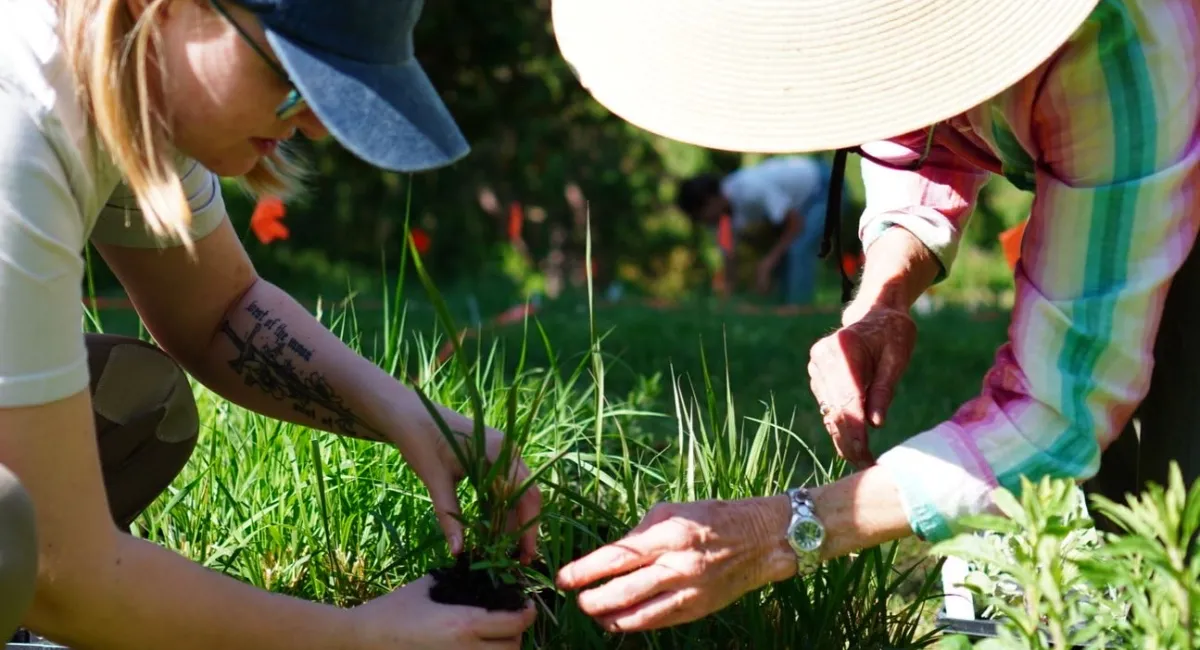Bees
Bees are fascinating! Check out our vetted resources about native bees:
Articles:
- Pollen Specialist Native Bees Story Map - Heather Holm helps us understand what pollen specialism means with close up photos and video.
- Bees 101: Buzzworthy Facts - This succinct article expands on knowledge beyond honey bees.
- More on Leafcutter Bees - Leafcutter bees cut circles out of leaves for their nests and have cute upturned abdomens. There are iNaturalist projects tracking what plants they use to analyze plant preferences.
Insect Guides and Comprehensive Lists:
- Spencer Hardy's Bees of Vermont - This is Vermont’s first bee survey, a collaboration between Vermont Center for Ecostudies and Vermont Fish and Wildlife Department. Explore specialist bees by host plant and habitat and learn the “most wanted” rare ones. Submit to iNaturalist to help this research.
- Watching Bees: Field Guide to Wild Bees - This is both a teaching and ID guide written for beginner to restoration practitioners and land managers!
- Tufts Pollinator Initiative's Pollinator Guides - These simple, beautiful field guides include bumble bees, hover flies and butterflies.
- UNH Rehan Lab Bee and Plant Guide - This comprehensive pdf reviews important bee ecology, and it’s easy to read on a mobile phone.
- Jarrod Fowler’s Pollen Specialist Bee/phenology/host plant list - Spectacular information and photos of pollen specialist bees which are roughly 25% of eastern North America’s 770 native bee species.
Fireflies
We’ve shamelessly copied Rebecca McMackin’s excellent description of fireflies from her Grow Like Wild - Buck Moon #11 newsletter.
Here’s Rebecca’s words:
I got to go on NPR and talk about Fireflies!! It was awesome. BBP Gardener Pawel Pieluszyński and I spoke about their life cycles, behavior, and how to encourage them in the landscape. We didn’t have time to get into everything so I’ll try to list a few tips below.
- Leave the leaves and wet spots: Fireflies lay eggs on moist soil and plant material. They live as soil-dwelling glow worms for a year or two before taking to the skies.
- Plant native plants: fireflies are carnivorous as larvae. They eat snails and worms, all the animals attracted to a robust garden ecosystem. And adults sometimes nectar on milkweed.
- Don’t use pesticides or fertilizers: Fireflies spend most of their lives in the soil. So anything you put down to kill grubs or “pests” will kill them as well. And synthetic fertilizers break down the basis of the soil food-web.
- Reduce nighttime lighting: Like many animals, light pollution is a major problem for fireflies, as they can’t see each other’s flashes with competing lights. Lights can be put on motion sensors or timers. Shields can be put on bulbs so they only shine where needed. And bulbs should always be yellow LED, rather than white.
- Enjoy them! Seriously, this is magical stuff. How crazy are we as a culture that we don’t all spend these nights on picnic blankets drinking wine and watching the show? They return to the same spots to flash each year. And you can impress your friends by learning to read their flashes and relate the sordid tale of the femme fatal fireflies, luring males to a grisly end.

